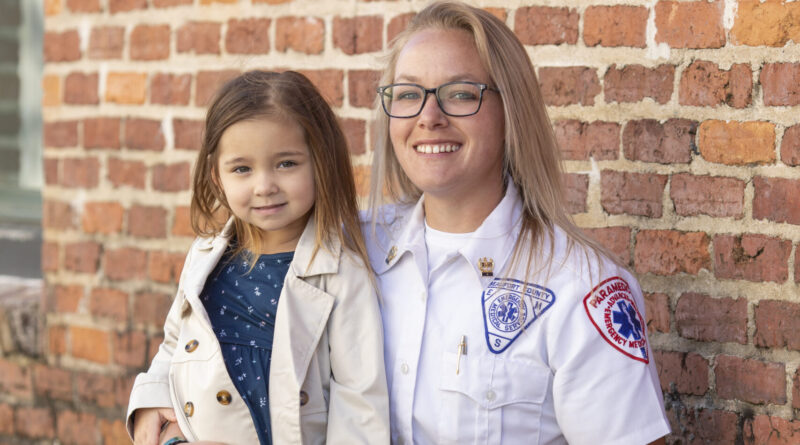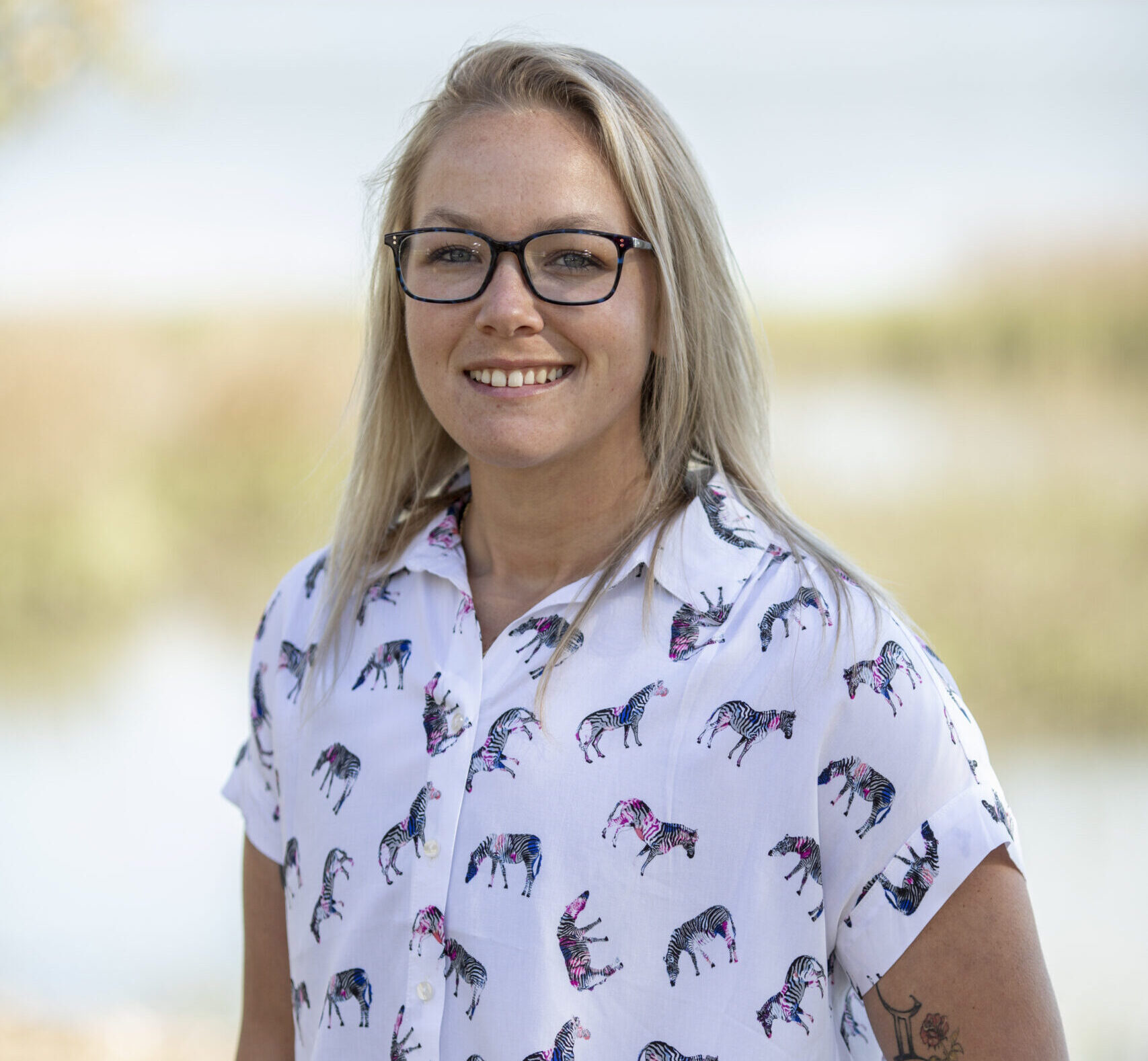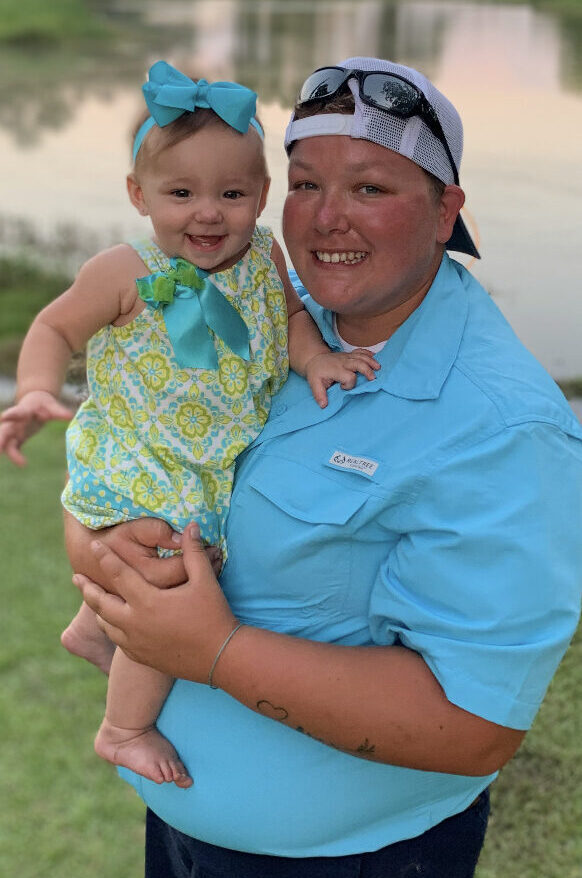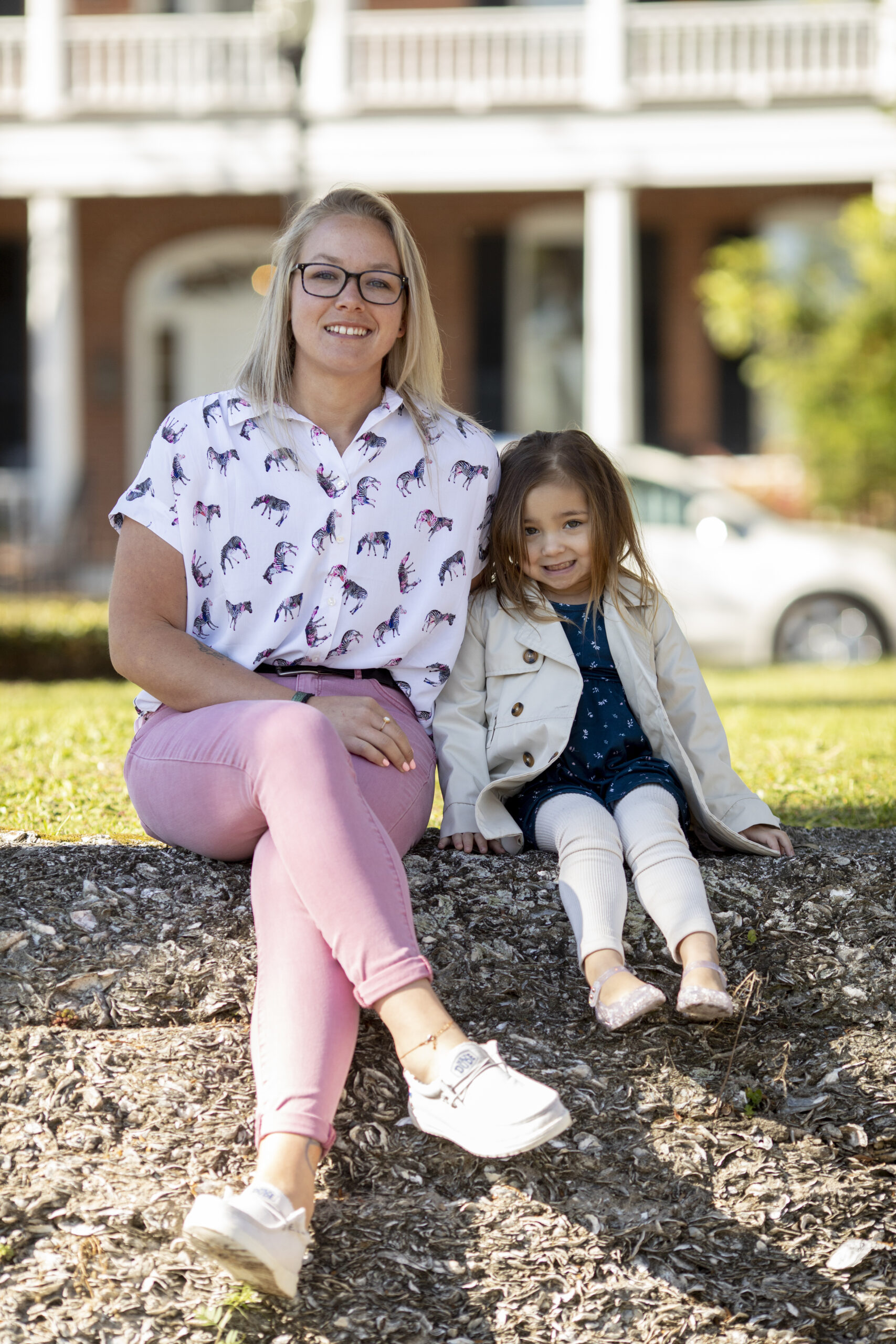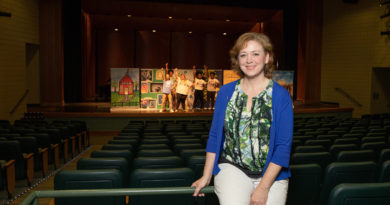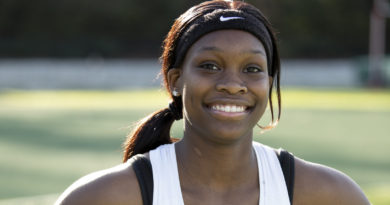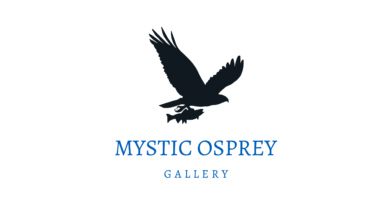SARA CATHEY
Inspiring Others to Save Lives
story by KAREN SNYDER photos by JOHN WOLLWERTH
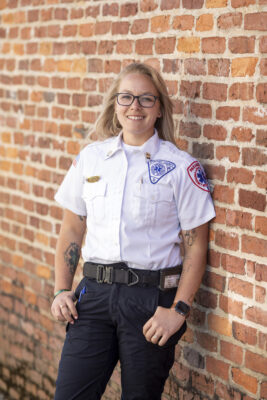 As a local paramedic for Beaufort County, 27-year-old Sara Cathey spends her days helping others and sometimes saving lives. In her own words, she describes her work as “being the light on someone’s darkest day.” Little did she know that in July 2022, that light would be shining the brightest it ever had. That’s when Cathey underwent a live kidney donation surgery to save another’s life.
As a local paramedic for Beaufort County, 27-year-old Sara Cathey spends her days helping others and sometimes saving lives. In her own words, she describes her work as “being the light on someone’s darkest day.” Little did she know that in July 2022, that light would be shining the brightest it ever had. That’s when Cathey underwent a live kidney donation surgery to save another’s life.
That “someone” was her 18-month-old niece, Natalyn Mann, who had both her kidneys removed due to a rare medical condition that blocked her arteries. According to Cathey, watching the events that led to her niece’s ultimate need for a kidney were heart-wrenching. “My niece has a big personality. She’s happy and sassy. But on Memorial Day weekend 2021, she became extremely lethargic, had stopped urinating, and was completely unresponsive. She had been swimming in the heat over the weekend, so I thought it might be dehydration at first, and she just needed some IV fluids. As a paramedic, I just didn’t want my mind to go to the extreme.”
Cathey encouraged her sister and brother-in-law to take her to the ER, and after repeated lab work, it showed results that, according to Cathey, “basically weren’t conducive with life.” At that point, adds Cathey, “The doctors couldn’t believe that she was even breathing on her own.” Little Natalyn was air transported to the Medical University of South Carolina (MUSC) in Charleston, where her two-month diagnostic journey began.
Natalyn had suffered complete renal failure and was placed on continuous dialysis, yet it took some time for medical staff to determine what caused her kidneys to fail. “Being medical personnel myself, I think I read over 100 medical books. I just needed to do something to help — in hopes of gaining some piece of information that might help us understand what was happening,” admits Cathey, warning that kidney disease is often known as the “silent killer.” According to Cathey, 90 percent of people living with kidney disease don’t even know they have it until the end stages of the disease.
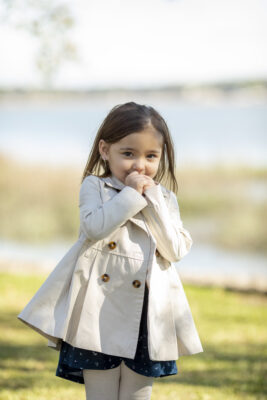 “Natalyn was Stage 5. That meant there was no going back. So, she had the double nephrectomy, having both her kidneys removed, at 19 months old.” Eventually, MUSC diagnosed her niece with an unusual combination of conditions, rare in children, called bilateral renal artery stenosis and diffuse mesangial sclerosis. Essentially, Natalyn’s arteries to her kidneys had narrowed, restricting blood flow, Cathey explains.
“Natalyn was Stage 5. That meant there was no going back. So, she had the double nephrectomy, having both her kidneys removed, at 19 months old.” Eventually, MUSC diagnosed her niece with an unusual combination of conditions, rare in children, called bilateral renal artery stenosis and diffuse mesangial sclerosis. Essentially, Natalyn’s arteries to her kidneys had narrowed, restricting blood flow, Cathey explains.
Yet, in many ways, this is where much of Natalyn’s and Cathey’s story begins. The bottom line was that her niece needed a kidney, and Cathey didn’t waste a moment volunteering to be a donor. Natalyn’s mother and father were excluded from being donors due to their own medical conditions. “So,” says Cathey, “I thought, I’m healthy. I’ll get tested!”
Unfortunately, Cathey’s eagerness was thwarted almost immediately. She learned she had one obstacle which would disqualify her from submitting her donation paperwork. “I was morbidly obese at 278 pounds and was told that alone would disqualify me from donating my kidney.”
Disappointed and scared as she watched her niece lay almost lifeless in bed, Cathey knew she wasn’t going to let her weight stop her from donating the life-giving kidney her niece critically needed. “Natalyn was placed on the national donor list, but no one would be a better match than me. Receiving a ‘live’ kidney rather than one from a deceased donor is always the better option,” she explains.
“People like to call me a hero for helping to save Natalyn, but I don’t see it that way. In a lot of ways, Natalyn saved me,” insists Cathey. “She was my motivation to lose 135 pounds. I tried in the past to lose weight but never really was successful. I think that’s because I never had a reason.” Cathey, who leads an active lifestyle in her work as a paramedic and in her hobbies that include hunting, fishing, boating, and “just about anything outdoors,” says, “I was comfortable with my weight, but now I had a reason to achieve my weight loss goal.”
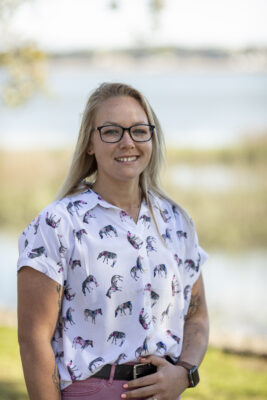 Cathey indicated she couldn’t apply to become a donor until she minimally achieved a weight of 185 pounds. “But to actually be looked at for donation, I had to lose additional weight and maintain that weight to show that I could be healthy,” says Cathey. “I told myself that I could do it!” And do it, she did! Almost exactly a year later, Cathey submitted her donor paperwork (doing so without telling anyone). “I just didn’t want to disappoint anyone and get their hopes up if they found I wasn’t a match.”
Cathey indicated she couldn’t apply to become a donor until she minimally achieved a weight of 185 pounds. “But to actually be looked at for donation, I had to lose additional weight and maintain that weight to show that I could be healthy,” says Cathey. “I told myself that I could do it!” And do it, she did! Almost exactly a year later, Cathey submitted her donor paperwork (doing so without telling anyone). “I just didn’t want to disappoint anyone and get their hopes up if they found I wasn’t a match.”
But she got the call from the MUSC transplant team, and her journey of 48 hours of scans, labs, and other testing began. “They are really protective of you as the donor,” she explains. “They want you to be healthier than anybody. They don’t want to take anything from you that you would potentially need.” According to Cathey, being obese meant she had a greater potential to suffer from hypertension and diabetes. “Those were my risk factors and why I had to get down to a certain weight.”
But now, as a kidney donor, Cathey assures, “There are no restrictions. I can be active, drink alcohol occasionally, if I choose. It really doesn’t dampen my life at all!”
She remembers the day she got the call that she was a perfect match. “I was at work. They called me, and I was crying, and so was my whole department. We all were crying because they went through this journey with me.”
Thankfully, Cathey’s donation to her niece was successful on July 6, 2022. Sometimes there can be issues when an adult kidney is transplanted into a child, says Cathey. For Natalyn, this meant she would have to be cut down the center of her abdomen, and rather than placing the kidney to one side, it would be put in the center. “That way, it’s protected by her other organs.”
Cathey’s surgery went “super well,” she says, adding that a Da Vinci Surgical System for minimally invasive surgery was used. “I have just a 3-1/2-inch incision scar near my belly button and three other little puncture holes where they insert cameras.” As far as the surgery goes, Cathey says she was in recovery for 24 hours and released the next day.
Natalyn endured an eight-hour surgery, remaining in the hospital for two weeks. After handling a few post-operative “bumps,” which included addressing how blood was flowing to her new kidney, they decided additional cadaver arteries were needed.
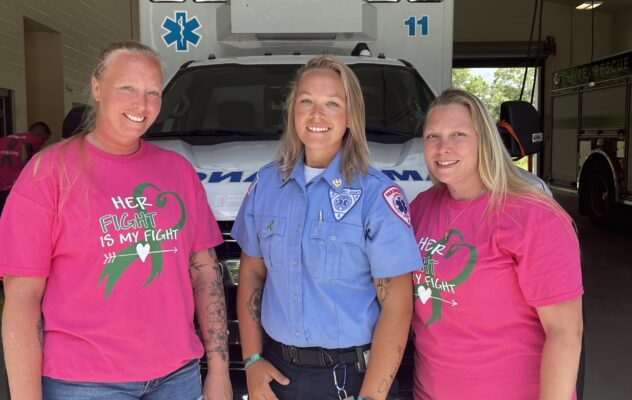
“Natalyn had the best attitude. It was hard in the beginning. She wasn’t able to have anything to eat months before the surgery. But she would say, ‘I can eat when I get Aunt Sara’s kidney!’ so she was excited when she finally got to eat her macaroni and cheese!”
Cathey reports that, almost a year later, her niece is doing “very, very well.” As for Cathey, she is now inspiring others to consider live kidney donation. Her mantra, she says, is “share your spare!” Last month was National Kidney Disease Awareness Month. “I spent the month posting daily on social media about our journey. I want others to know more about the silent killer of kidney disease and consider signing up to be a donor,” she adds, encouraging others to speak to their family about their wish to donate their organs in death, if live donation isn’t possible.
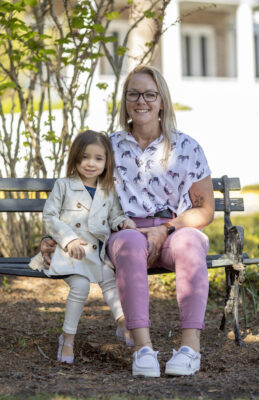 “I don’t know how to explain it except to say that live kidney donation is a beautiful process. It really makes you feel good. Once I did it, I put it in my mind that I didn’t want another family to go through what we were going through in needing a kidney,” she says. Something to keep in mind, she says, is that there are no medical costs to the donor, and financial assistance is available should the donor have to take unpaid leave from work, for example.
“I don’t know how to explain it except to say that live kidney donation is a beautiful process. It really makes you feel good. Once I did it, I put it in my mind that I didn’t want another family to go through what we were going through in needing a kidney,” she says. Something to keep in mind, she says, is that there are no medical costs to the donor, and financial assistance is available should the donor have to take unpaid leave from work, for example.
“I’m an open book,” laughs Sara. “I think the more you know, the easier it is to consider donation,” she says, urging everyone to get tested. “I welcome anyone to ask me questions to learn more.”
Looking ahead, it’s no doubt Cathey will continue to meaningfully impact the lives of those in our community. In fact, she is currently pursuing her EMT certification in critical care. Having grown up in the three-county area, Cathey says she’s not going anywhere. The Lowcountry is “absolutely gorgeous! It’s the sunsets that get to me the most and just one reason why I love living here.”

